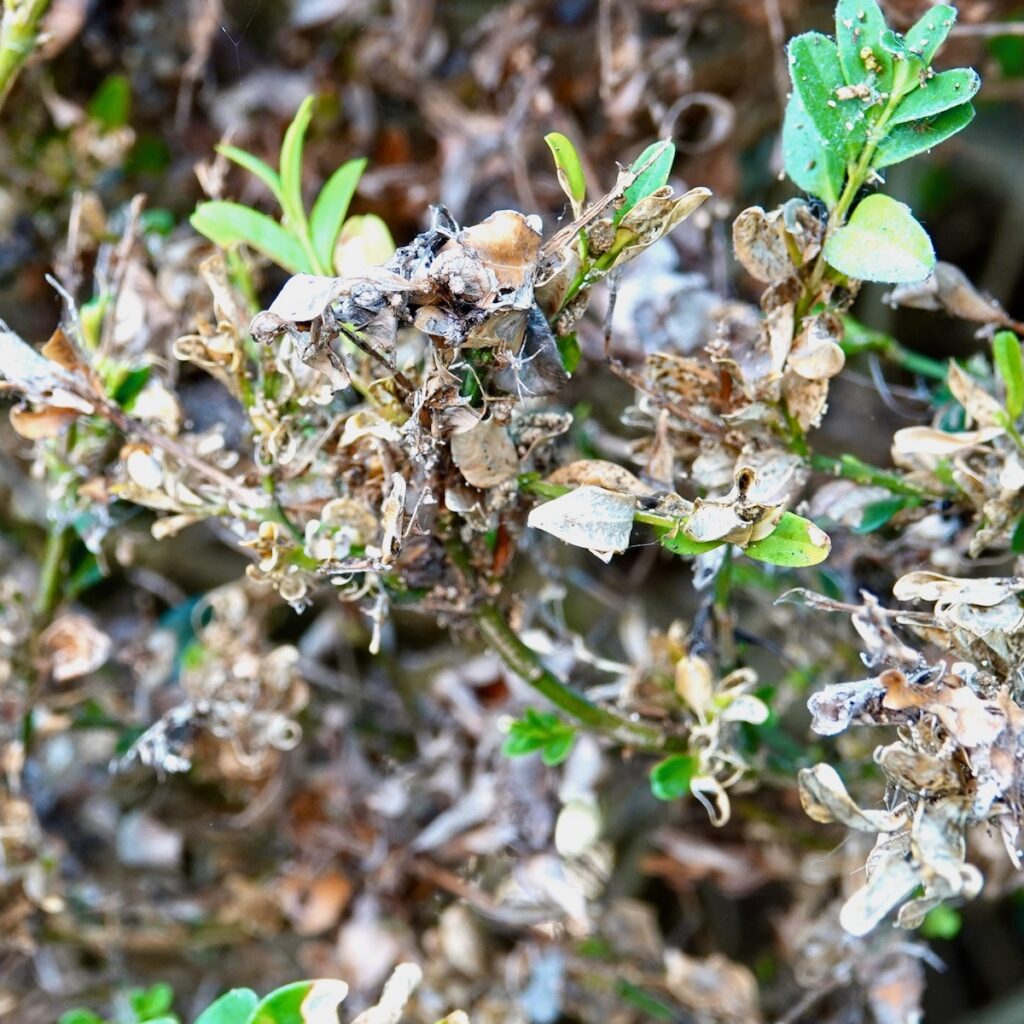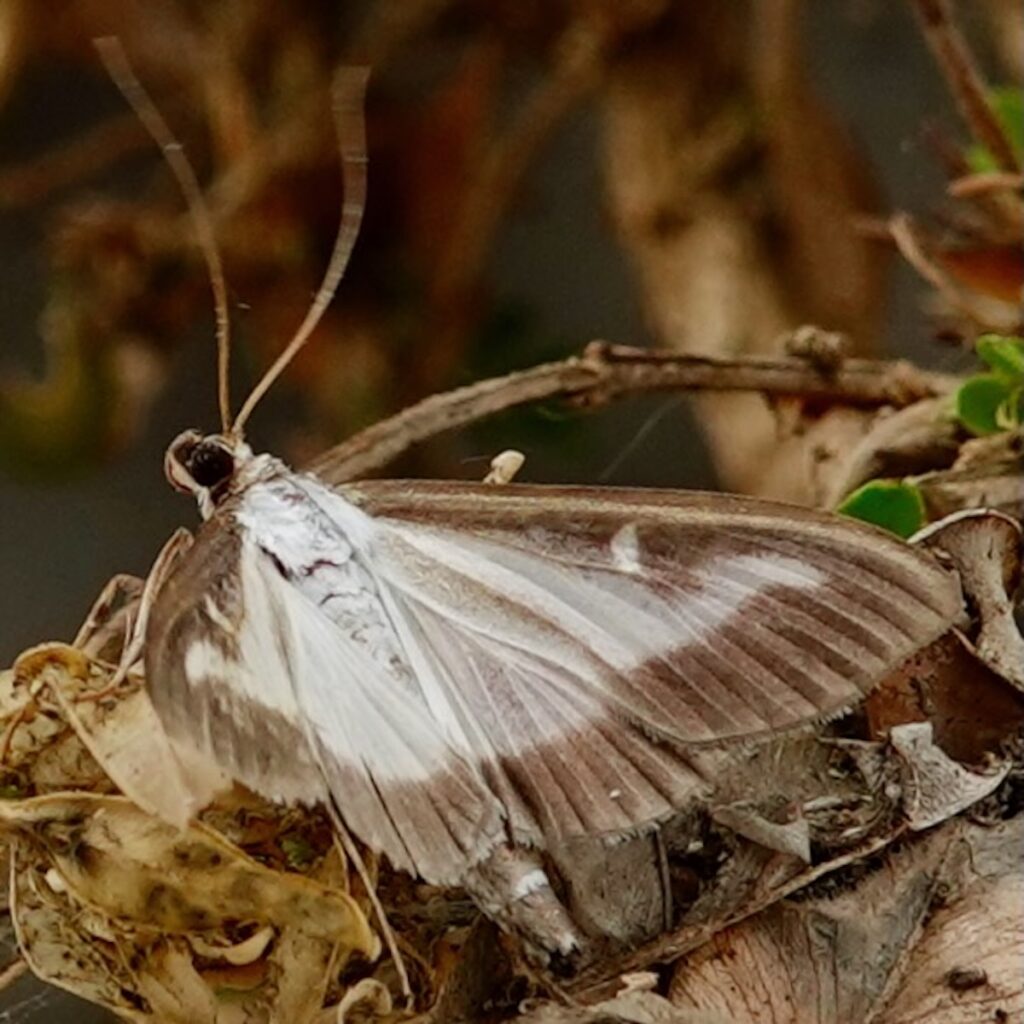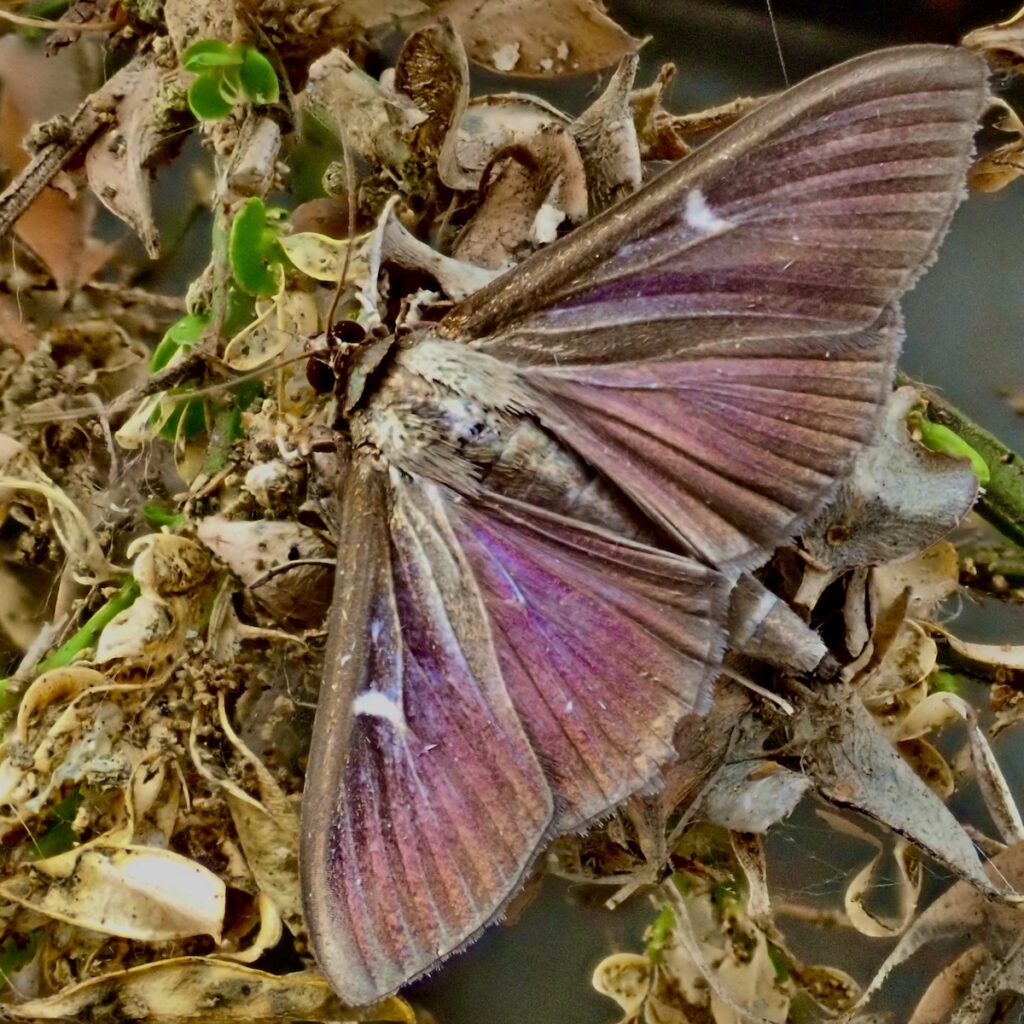The Box Tree is a native evergreen that is primarily found in Southern England although it has been widely planted throughout the country as an ornamental shrub. It has dark green leaves and a grey bark and it can be clipped into a variety of shapes. It has long been subject to a fungal disease known as box blight that causes bare patches and dieback but in 2011 a new and more serious problem started to spread throughout the country – the Box Tree Moth. The caterpillars of this moth feed on the leaves of the Box Tree as well as shrouding the branches in a web of silk, often leaving no green leaves at all.

The Box Tree Moth was introduced accidentally from Asia by the horticultural trade and was first seen in Kent in 2007, spreading to gardens in the London area by 2011. Since then it has spread throughout England and has now reached Scotland and Wales. The first record in Leicestershire was in 2017 and it has now been seen in most areas of the county wherever Box trees are grown. It is an attractive and easily recognised species with silky white wings with a broad, brown border. The wingspan is around 40mm and the moth can be seen on the wing from July to September.

There is a rarer, even more attractive form of the moth which has purplish brown wings with a white spot near the centre of the wing. However attractive they might be, this moth is generally not well liked as the caterpillars can rapidly defoliate any Box trees, particularly the cultivars favoured by gardeners.

Attempts have been made to control the Box Tree Moth. Some gardeners use pheromone traps, which contain a liquid that attracts these moths specifically – when they fly into the trap they drown. The alternative is to spray the trees with insecticide at regular intervals during the flight period of the moths. Neither of these methods are particularly successful and there is always a problem with killing non-target individuals. I have chosen a different and completely successful route – digging up my box bushes and replacing them with other species that do not suffer from these problems.
© The Journal 2023